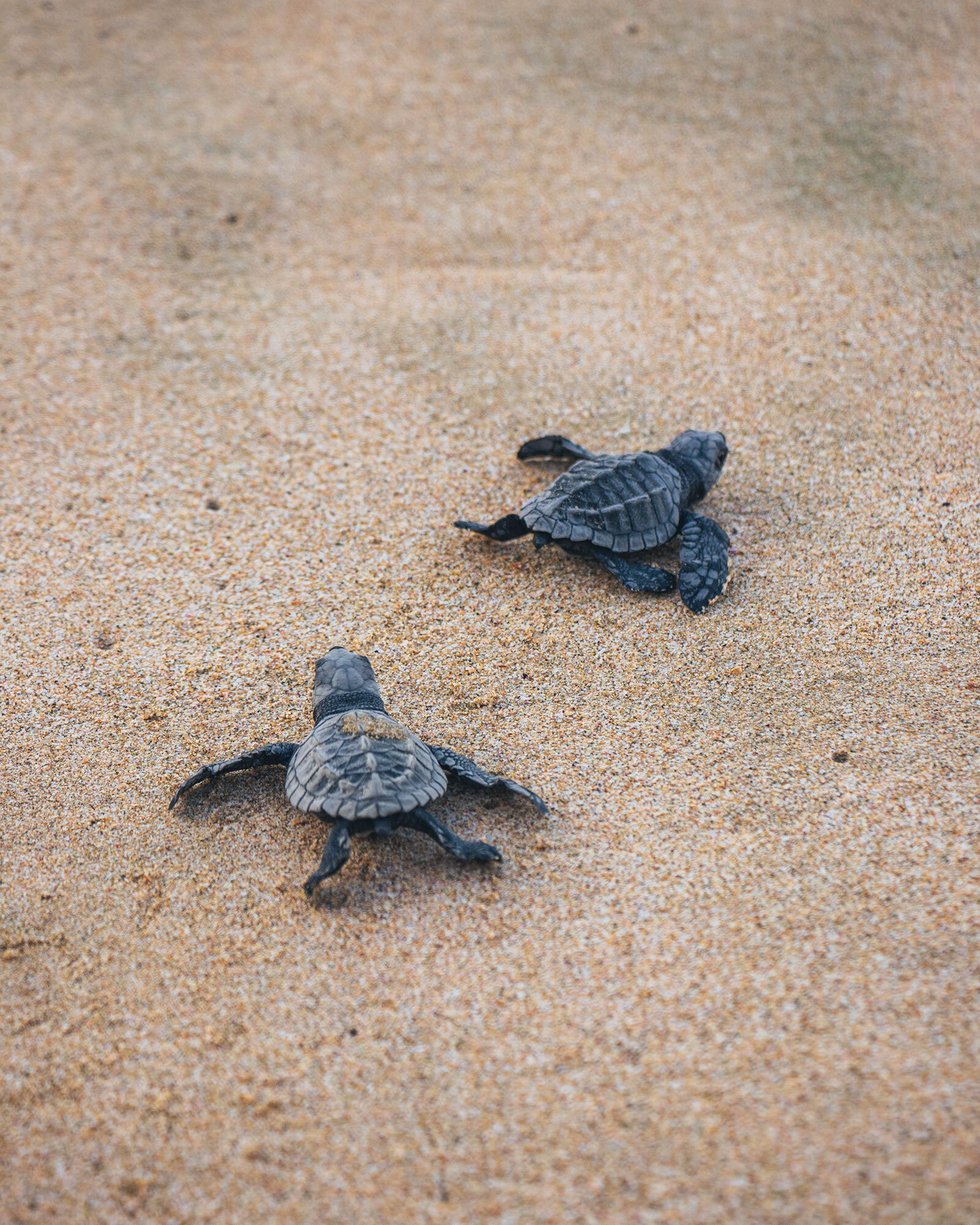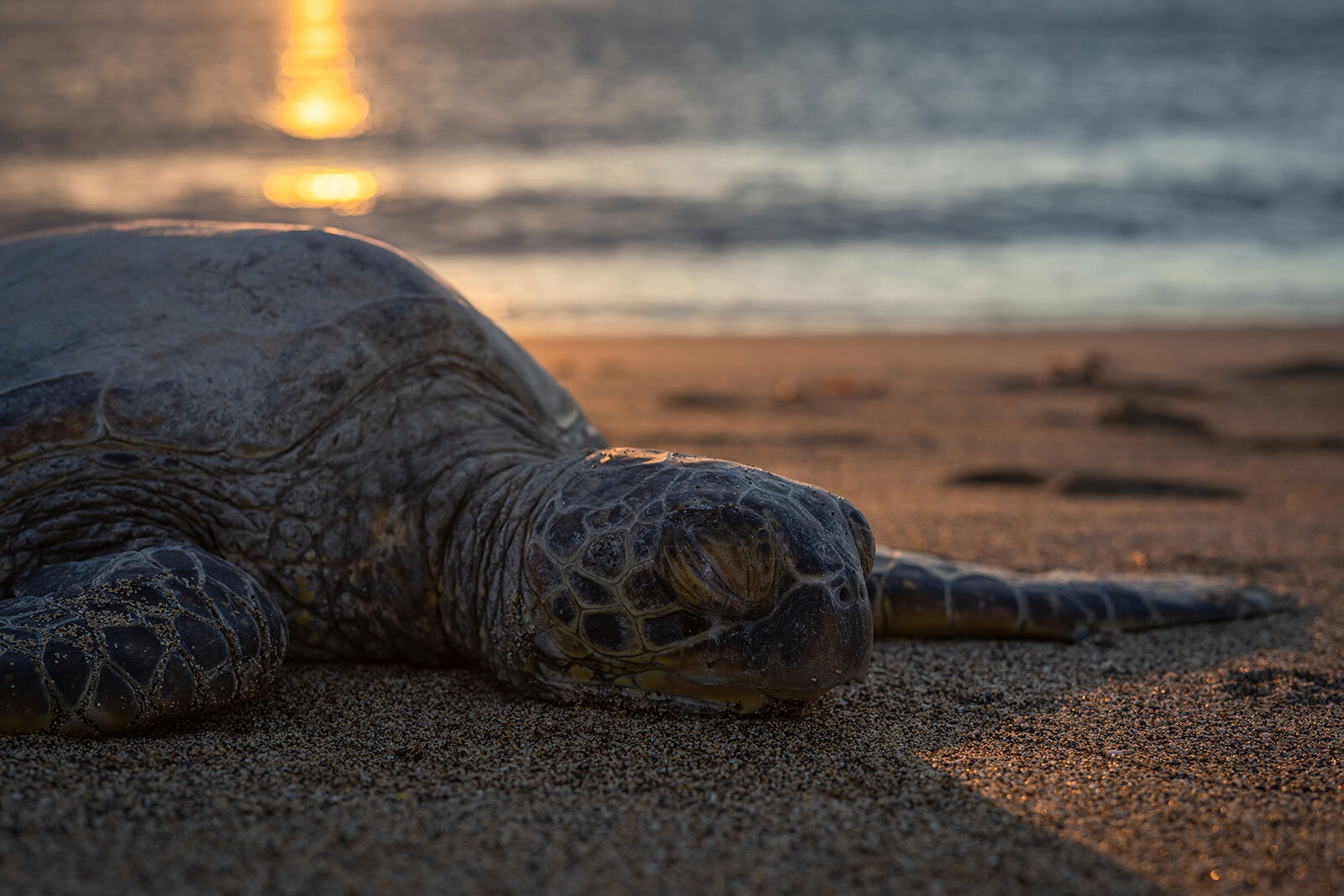The Trouble With The Turtles: Is It Time To Stop Swimming With Them In Akumal?
Written by Alex Ruelase
Akumal is an ecological treasure. The crystalline bay, named in Maya “the place of turtles”, is a natural aquarium that hosts astounding biodiversity. The u-shaped inlet and its colorful coral reef provide shelter and sustenance for many creatures, including green sea turtles that spend their early adulthood foraging in the bay before going out to the open ocean. Every year they come back to lay their eggs, turning the white sands into a busy nursery.
This bay has long been a wildlife spectacle for locals and visitors alike. However, lately, it has become used to bad news. Stories of over-exploitation, pollution, and a general decline of the ecosystem have become ever more common. Meanwhile, sightings of turtles and other marine animals are increasingly rare. This is the story of a vibrant ecosystem that needs our help.
What is going on?
The ecosystem is in trouble. Over the past ten years, the inlet has experienced a well-documented decline. Reef cover has decreased by around 50 percent since the 1970s –most of the loss occurring in the last decade. Commercially valuable fish species, like red porgies and groupers, are now all but gone. Nearby mangrove forests have given way to resorts with grass lawns, and untreated wastewater flows ever more steadily towards the ocean. Meanwhile, tourism has exploded. In 2011, the bay received 57,000 visitors. By 2015, numbers had peaked at just under 275,000.
Pressure on the reef and its many creatures is also part of a global trend. Warming waters and acidification caused by carbon emissions contribute to bleaching events that kill corals. At the same time, spreading sargasso, a phenomenon likely caused by unsustainable agricultural practices in the Amazon basin, covers the reef, alters food chains, and pollutes the inlet.
As usual, talking about environmental problems can get very bleak very fast. Akumal and its turtles are having a hard time. Stories of how people used to spot them much more easily only a few years ago abound. However, there are many silver linings and multiple paths for action. Together, travelers and locals can do their part in preserving this Caribbean refuge.
What can we do?
There are many things we can do better to take care of Akumal’s ecosystem. First, we may have to acknowledge we are part of the issue.
One of the main reasons people come to the bay is to snorkel with these amazing creatures. Sharing the water with them is a fabulous experience. However, it can also be detrimental to the species.
Scientists recently found that continued contact is causing stress-related illness in turtles. Residues of sunscreen and urine produced by tourists can even cause them to develop conditions such as skin tumors. Further, overcrowding of their habitat can displace them from their preferred feeding areas.
In short, crowds are bad for them. And although the pandemic has arguably given this bay and the rest of the Caribbean coast some much-needed rest, as tourism picks up its usual pace, our presence will again become an issue.
There is one obvious path of action to alleviate pressure on turtles and their homes: stop swimming with them. If we are not there, we won’t be a nuisance. However, we realize this is a tough ask for people who travel from far away to have this experience. If you decide to snorkel in Akumal, there are some rules to follow and other things to consider.
Keep your distance
We cannot emphasize this enough. Staying clear of the turtles is crucial to leaving them unharmed. Stay at least 2 meters away from them and under no circumstances touch them –doing it is illegal. Also, mind your buoyancy and the extra length of your fins. It is easy to forget and accidentally either kick a turtle or stir the bottom, which can also disturb marine animals.
Follow the rules
Akumal is a public space, and anyone is welcome to enjoy it. However, please observe the rules. These include staying clear from areas set out of bounds by environmental authorities. Look for the signs at the beach. They will tell you everything you need to know. It is easy to comply and be respectful of the ecosystem.
No sunscreen
This may not be the usual advice you get when going to the beach, but it is important. Sunscreen severely damages reefs and, as we said before, it has been linked to aggressive skin conditions in turtles. Even biodegradable sunscreen takes a couple of weeks to decompose, which is enough for turtles to eat it and cover corals, even if only for a short time. Wear a rashguard instead. Look cool –sort of– and protect the ocean.
No peeing in the ocean
Yes, the ocean is massive. But gather enough people in one spot, and even peeing starts to become an issue. Please use the public restrooms at the beach. The convenience of a swimming wee is not worth giving turtles skin tumors.
Discover other amazing places
Akumal is not the only place in the Riviera Maya where turtles are a common sight. Snorkeling and diving tours in Playa del Carmen and Tulum are also great opportunities to come across these incredible animals. Some people who stay at beachfront villas also have fortuitous encounters with turtles as they come ashore to lay their eggs. If you do, keep your distance, do not make any noise, and for no reason use camera flashes or flashlights.
Turtles are kin
Perhaps most importantly, we need to change how we think of animals. Turtles, fish, and all other sea creatures are sentient beings, just like us. When we enter their habitat, we are effectively guests in another persons’ home. Animals, just like people, are not there for our entertainment. They are going about their daily lives and deserve our utmost respect as we come close to observe them.
If we manage to think of them as beings with intelligence and emotions comparable to ours, we may find another relationship with the more-than-human world. Each encounter will be full of serendipity and meaning, and we might move away from thinking of wildlife experiences as commercial transactions.
This is not hippie wishful thinking, it is a step towards redefining our place in a world full of life and full of urgent challenges. We must weave stronger links with our biotic community which allow us to care for other creatures as we do for our kin. Maybe the turtles of Akumal can show us where to begin.




























